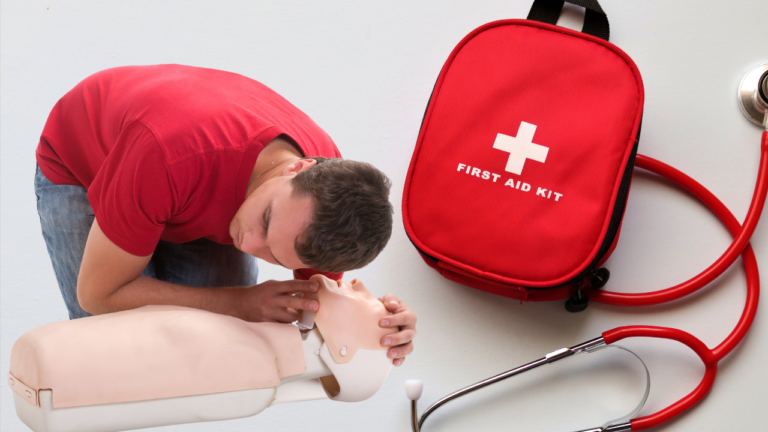Why Did CPR Change from ABC to CAB? Understanding the Shift That Saves Lives
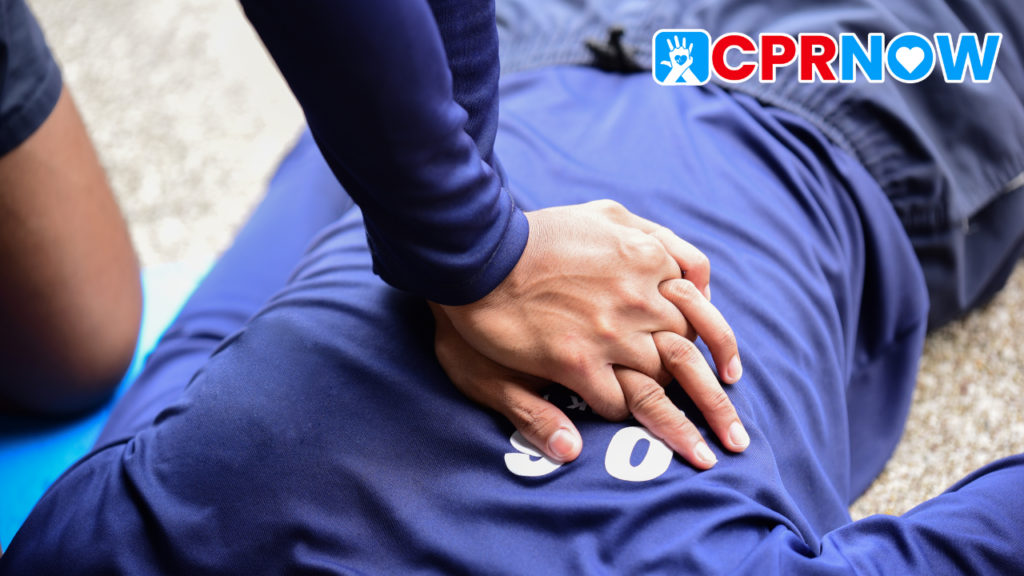
As a certified CPR instructor with years of experience training healthcare professionals, first responders, and the general public, one of the most common questions I hear in class is:
“Why did CPR guidelines change from ABC (Airway, Breathing, Circulation) to CAB (Circulation, Airway, Breathing)?”
It’s a great question—and one that deserves a thorough explanation. Whether you’re a seasoned healthcare worker needing a refresher or a new learner curious about the reasoning behind these life-saving protocols, understanding this shift can make you a more confident and effective responder.
In this article, we’ll explore:
-
The original ABC method and how it worked
-
Why the American Heart Association (AHA) changed the order to CAB
-
The science and research that influenced this shift
-
How CAB improves survival outcomes
-
What this means for bystanders and professional rescuers
-
Common misconceptions and questions
-
What you should do in a real emergency today
Let’s dive into the history, the rationale, and how you can apply this life-saving knowledge.
A Quick History of CPR and the ABC Method
What Was ABC in CPR?
Before 2010, CPR training universally followed the ABC sequence:
-
A – Airway: Open the airway by tilting the head back and lifting the chin.
-
B – Breathing: Give two rescue breaths.
-
C – Circulation: Begin chest compressions.
This approach emphasized checking for a blocked airway and restoring breathing before performing compressions. The logic was: if someone isn’t breathing, get oxygen into the lungs first, then circulate it with chest compressions.
When and Why Did It Change?
In October 2010, the American Heart Association (AHA) issued new guidelines that changed the sequence from ABC to CAB.
Now, rescuers are trained to:
-
C – Circulation: Begin chest compressions immediately.
-
A – Airway: Open the airway after 30 compressions.
-
B – Breathing: Deliver two rescue breaths.
This shift was a major departure from decades of CPR tradition—and it wasn’t made lightly. It was the result of extensive research, real-world evidence, and a deeper understanding of what really works during a cardiac emergency.
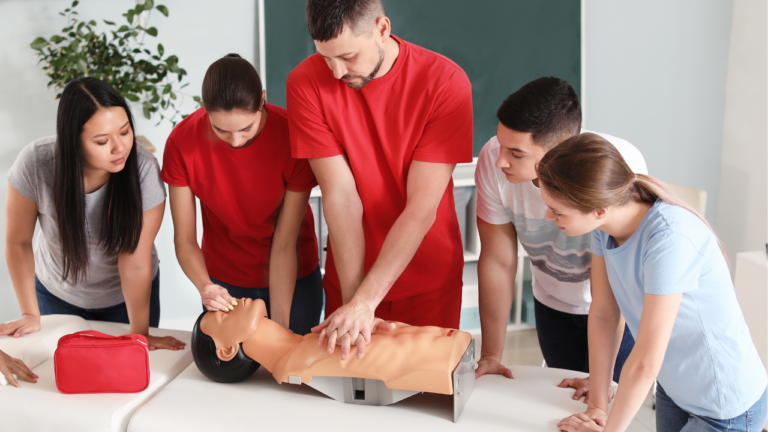
CPR BLS for Healthcare Provider
The AHA’s BLS CPR Course is designed for healthcare professionals and other personnel who need to know how to perform CPR.
The AHA’s BLS course trains participants to promptly recognize several life-threatening emergencies, give high-quality chest compressions, deliver appropriate ventilations and provide early use of an AED.
Our BLS CPR course is available in our Lakeland and Tampa Locations, Our Online CPR Hybrid Course or We can set up a group class at your facility.
*Make sure to enter discount code upon checkout.
Why Did the AHA Change CPR from ABC to CAB?
1. Time is Muscle: Chest Compressions Save the Heart and Brain
When someone suffers sudden cardiac arrest (SCA), the heart stops pumping blood effectively. Within seconds, oxygen-rich blood stops reaching the brain, heart, and vital organs. Brain cells begin to die within 4 to 6 minutes without oxygen.
By prioritizing chest compressions first, we immediately start circulating whatever oxygen remains in the bloodstream. Even without rescue breaths, there is enough oxygen in the lungs and blood to sustain basic function in the first few minutes. The key is getting it moving.
2. Rescue Breaths Cause Delays in Starting Compressions
One of the biggest drawbacks of the ABC method was that it delayed the start of chest compressions. Opening the airway and giving two breaths could take 10 to 30 seconds, especially for untrained rescuers. During that time, no blood is being circulated—meaning vital organs are starving for oxygen.
3. Most Adults in Cardiac Arrest Have a Heart Problem—Not a Breathing Problem
ABC was based on the assumption that breathing issues caused cardiac arrest. But studies show that most adult cardiac arrests are of cardiac origin—not respiratory. This means the heart stops first, and breathing follows.
In these cases, oxygen is already present in the lungs and bloodstream. The immediate need is to circulate that oxygen, not to add more. Starting with compressions addresses the root cause and buys time for advanced care.
4. Improved Survival Rates with Compression-First CPR
Research leading up to the 2010 update found that victims who received immediate chest compressions had higher survival rates than those who received delayed compressions due to early rescue breaths.
One landmark study published in the Journal of the American Medical Association (JAMA) found that compression-only CPR was just as effective, if not more so, in adult cardiac arrest cases compared to traditional CPR with rescue breaths.
5. Easier for Bystanders to Learn and Remember
For the average person witnessing a cardiac emergency, CPR can feel intimidating. Remembering complex steps, giving mouth-to-mouth, and worrying about “doing it wrong” often causes bystanders to freeze and do nothing.
CAB simplifies the process:
“Push hard and fast in the center of the chest. Start right away.”
This straightforward approach increases the likelihood that someone will take action—and action saves lives.

Save time and take CPR Online!!
Our American Heart Association Hybrid CPR course is the ideal solution for busy healthcare professionals who don’t have hours to spare. Complete the online portion at your own pace, anytime, anywhere—and then schedule a quick, in-person skills session (30 min) at our facility to finish your certification.
It’s convenient, flexible, and fully AHA-compliant—perfect for those with demanding schedules who still need to stay certified.
What Does CAB Look Like in Action?
Let’s break down what CAB means for adult CPR, as taught in current American Heart Association courses:
Step-by-Step Adult CPR (CAB)
C – Circulation (Compressions First)
Check for responsiveness and call for help.
Activate EMS (call 911) and get an AED if available.
Begin chest compressions immediately:
Rate: 100 to 120 compressions per minute
Depth: At least 2 inches deep on an adult
Allow full chest recoil and minimize interruptions
A – Airway
After 30 compressions, open the airway using the head-tilt, chin-lift technique.
B – Breathing
Give 2 rescue breaths using a barrier device if available.
Each breath should last about 1 second and make the chest rise.
Repeat the cycle of 30 compressions and 2 breaths until help arrives or the victim shows signs of life.
What About Hands-Only CPR?
In 2010, the AHA also introduced Hands-Only CPR for untrained bystanders. This method skips the airway and breathing steps entirely:
Hands-Only CPR:
Call 911
Start chest compressions only (CAB without the AB!)
Hands-only CPR is proven to be highly effective in the first few minutes of cardiac arrest—especially in adults—and has become a central message in CPR awareness campaigns.
What About Children and Infants?
While the CAB sequence applies to all age groups, there are slight differences in the approach for children and infants, especially when the arrest is likely respiratory in origin (such as drowning, choking, or asthma-related emergencies).
For infants and children:
CAB is still followed, but rescue breaths are more emphasized.
For lone rescuers: perform 2 minutes of CPR before leaving to call 911 (if you didn’t witness the collapse).
Remember: in children, respiratory failure is a more common cause of cardiac arrest, so breathing support is critical.
Common Misconceptions About CAB
“Isn’t it dangerous to skip breathing?”
In the first few minutes of sudden cardiac arrest, the body still has residual oxygen. Circulating that oxygen through chest compressions is more critical than adding more. After several minutes, breathing becomes more important, but compressions should never be delayed.
“Can chest compressions alone restart the heart?”
Not usually. CPR does not restart the heart—only a defibrillator (AED) can do that. CPR keeps blood and oxygen flowing to vital organs until advanced care can arrive and shock the heart back into rhythm.
“Is CAB only for professionals?”
No! Everyone should know the CAB sequence. The AHA’s simplified guidelines are meant for both trained responders and the public. You don’t need medical training to save a life.
The Real Impact of Switching to CAB
Since the adoption of the CAB model and greater emphasis on compression-only CPR:
Bystander CPR rates have increased.
More lives are being saved before EMS arrives.
The public has more confidence in taking immediate action.
In fact, studies from the National Institutes of Health (NIH) show that early compressions double or even triple the chance of survival when started immediately.
Final Thoughts: The Why Behind CAB
The change from ABC to CAB in CPR wasn’t about abandoning old principles—it was about adapting to what science and real-world outcomes have shown us:
Circulation is the first priority in cardiac arrest.
Delays in compressions reduce survival chances.
Simplifying the steps empowers more people to act.
As a CPR instructor, I stress to every student: Time is critical. Doing something is better than doing nothing.
So the next time you see someone collapse, don’t hesitate.
Start with compressions. Remember CAB. You could be the reason someone gets a second chance at life.
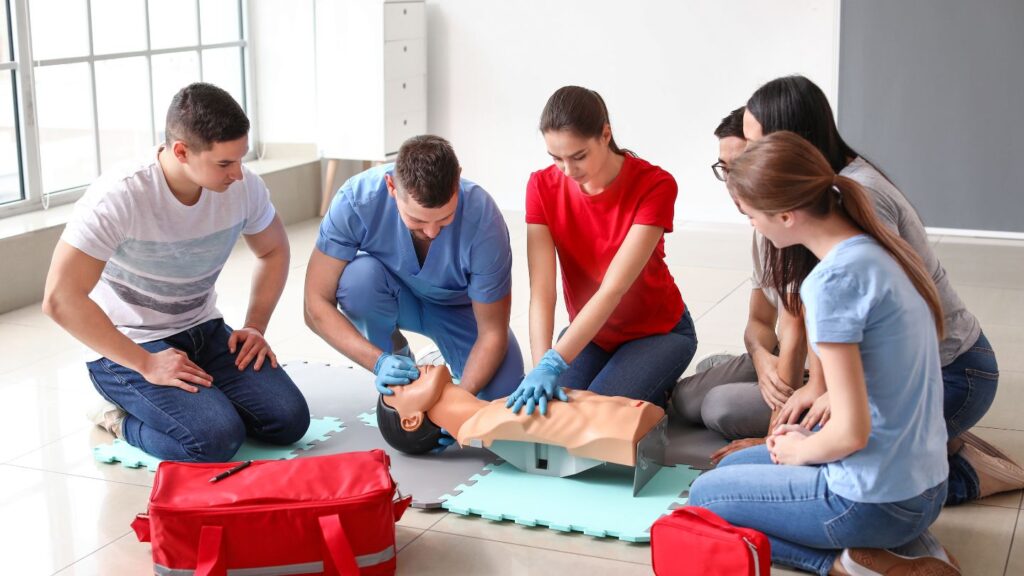
CPR BLS Course
The AHA’s BLS CPR Course is designed for healthcare professionals and other personnel who need to know how to perform CPR and other basic cardiovascular life support skills in a wide variety of in-facility and prehospital settings.
The AHA’s BLS course trains participants to promptly recognize several life-threatening emergencies, give high-quality chest compressions, deliver appropriate ventilations and provide early use of an AED.
Our BLS CPR course is available in our Lakeland and Tampa Locations, Our Online CPR Hybrid Course or We can set up a group class at your facility.
*Make sure to enter discount code upon checkout.
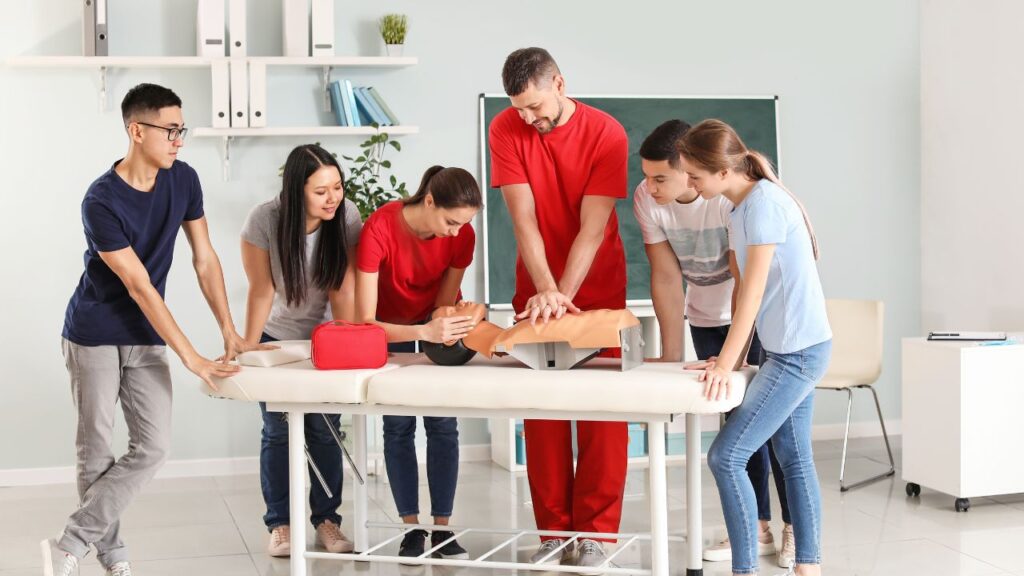
CPR, AED and First Aid Course
Looking for CPR certification near you? Enroll in our American Heart Association (AHA) Heartsaver® CPR, AED, and First Aid course, designed for individuals, employees, teachers, coaches, caregivers, and anyone with limited or no medical training who needs a CPR and First Aid certification to meet job or regulatory requirements.
This comprehensive, hands-on safety training course covers essential life-saving skills, including: CPR for adult child and infant; Use of an AED (difibrilator), Choking relief technique and First Aid care.
*Make sure to enter discount code upon checkout.

Lakeland Florida Training Center
211 E Main St, Lakeland, FL 33801 (No walk ins)

